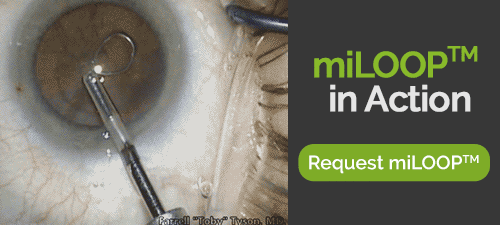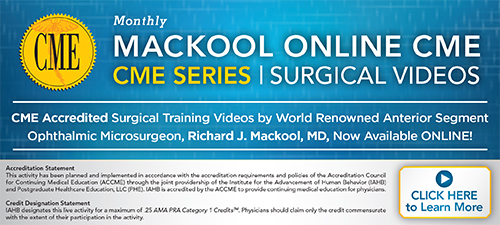
Volume 18, Number 21 |
Monday, May 21, 2018 |
|
MAY IS HEALTHY VISION MONTH |
|
||||
|
Usefulness of Brimonidine as Fourth Glaucoma Drop Scientists assessed the intraocular pressure-lowering effect of adding brimonidine as the fourth glaucoma medication to a pre-existing therapy of three topical drugs, as part of a retrospective, register-based, cohort study of medical records and computerized medical information in one county in Sweden.
|
|
| SOURCE: Bro T, Lindén C. The more, the better? - The usefulness of brimonidine as the fourth anti-glaucoma eye drop. J Glaucoma 2018; May 12. [Epub ahead of print]. |  |
|
Ranibizumab in Eyes with DME & Macular Nonperfusion in RIDE and RISE
Researchers looked for characteristics that distinguish individuals with diabetic macular edema with coexisting macular nonperfusion at baseline, and assessed the potential of individuals with DME to achieve favorable visual acuity, anatomic and diabetic retinopathy outcomes over 24 months, as part of a post hoc analysis of the RIDE/RISE Phase III, randomized, double-masked trials.
|
|
| SOURCE: Reddy RK, Pieramici DJ, Gune S, et al. Efficacy of ranibizumab in eyes with diabetic macular edema and macular nonperfusion in RIDE and RISE. Ophthalmology 2018; May 8. [Epub ahead of print]. |  |

|
|
 |
|
Review of Ophthalmology® Online is published by the Review Group, a Division of Jobson Medical Information LLC (JMI), 11 Campus Boulevard, Newtown Square, PA 19073. To subscribe to other JMI newsletters or to manage your subscription, click here. To change your email address, reply to this email. Write "change of address" in the subject line. Make sure to provide us with your old and new address. To ensure delivery, please be sure to add reviewophth@jobsonmail.com to your address book or safe senders list. Click here if you do not want to receive future emails from Review of Ophthalmology Online. Advertising: For information on advertising in this e-mail newsletter or other creative advertising opportunities with Review of Ophthalmology, please contact sales managers James Henne or Michele Barrett. News: To submit news or contact the editor, send an e-mail, or FAX your news to 610.492.1049 |


